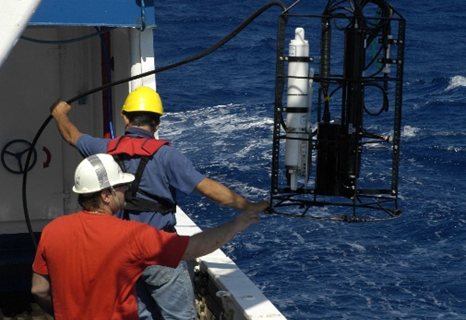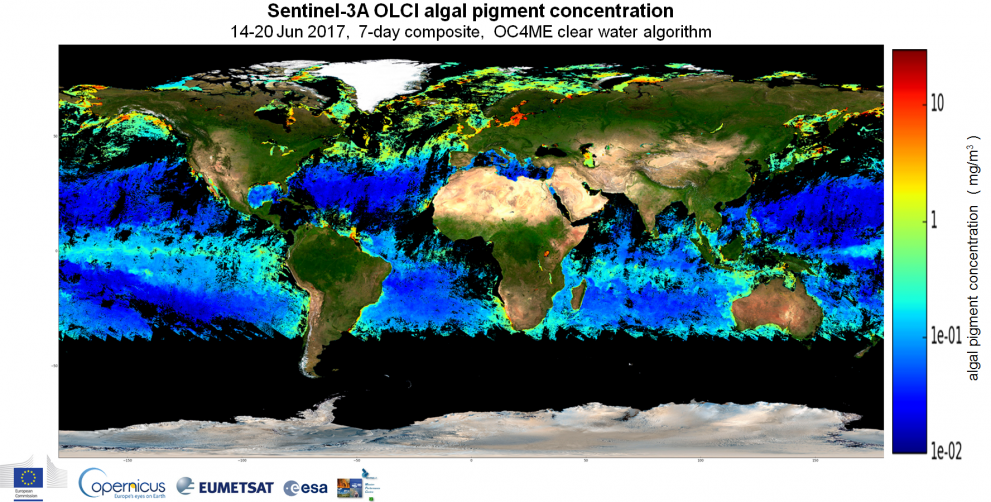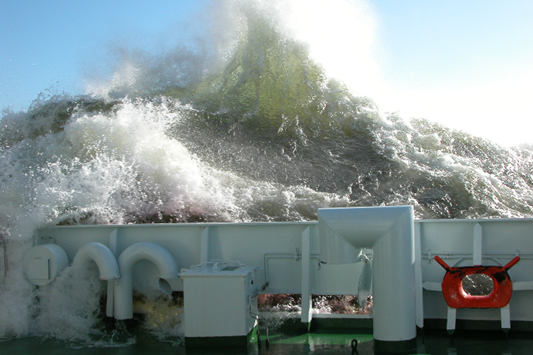
As part of its activities, the JRC has recently completed an on-site bio-optical measurement campaign in the Mediterranean Sea to verify the marine data produced by the Copernicus Sentinel satellites.
The oceans cover almost 70% of the Earth’s surface, and play a fundamental role in climate change.
Marine phytoplankton, which is composed of microscopic unicellular marine plants, contains chlorophyll that (through photosynthesis) uses sunlight to fuse water molecules and carbon dioxide into carbohydrates. When phytoplankton die, they sink to the sea floor, where the carbon dioxide they have absorbed is stored as marine sediment. Therefore, the larger the world's phytoplankton biomass, the more carbon dioxide is permanently pulled from the atmosphere.
Chlorophyll concentration is therefore used as a proxy for phytoplankton biomass, and is considered an essential variable to comprehensively investigate the Earth’s climate.
During the past few decades, satellite technologies have been developed to remotely quantify phytoplankton biomass at regional and global scales by analysing the “colour” of the ocean, which is affected by the capability of seawater constituents (such as phytoplankton) to absorb light and thus change the colour of the water as a function of their concentration.

In February 2016, the European Copernicus programme launched the Ocean Land Colour Instrument (OLCI) on board the Sentinel-3A spacecraft, which provides full coverage of the globe with a spatial resolution of up to 300 m every two days. Global maps of chlorophyll concentrations continuously produced from OLCI data can be added to those independently generated by various international space agencies. These time series of satellite products are expected to lead to the creation of Climate Data Records, which will help to investigate climate change and consequently support European and international policies or treaties.
To detect trends, the satellite data contributing to Climate Data Records must be continuously assessed. The JRC plays a leading role in this effort, which also involves several international space agencies and research institutions. In collaboration with national research institutions and international space agencies, the JRC has developed state-of-the-art methodologies and strategies to generate highly accurate in situ measurements to validate the accuracy of satellite data products for European seas. These methodologies and strategies address protocols, instrumentation and calibration methods for measurement activities performed from ocean vessels or fixed ocean platforms.

By relying on the previous methodologies and strategies, the JRC regularly undertakes ship-based and autonomous physical and biological measurements in European seas to comprehensively assess the uncertainties of satellite observations and of derived data products (such as chlorophyll concentration).
Ongoing JRC field activities focus on the validation of Copernicus OLCI marine data products. These field activities embrace oceanographic campaigns performed in the Western Black Sea in collaboration with the Bulgarian Academy of Science, in the Central Mediterranean Sea in collaboration with the Italian National Research Council, and will be soon followed by a new oceanographic campaign in the Iberian Shelf in collaboration with the Portuguese Hydrographic Institute.
In addition, in collaboration with space agencies such as the National Aeronautics and Space Administration (NASA), the JRC ensures autonomous and continuous validation measurements through standardised instrumentation deployed in European regions that present a large diversity of environmental conditions, such as the Black, Baltic and Adriatic Seas. All these data are currently being used for a comprehensive assessment of OLCI data products before their public release and successive application for the construction of Climate Data Records.
Further information
Details
- Publication date
- 29 June 2017
